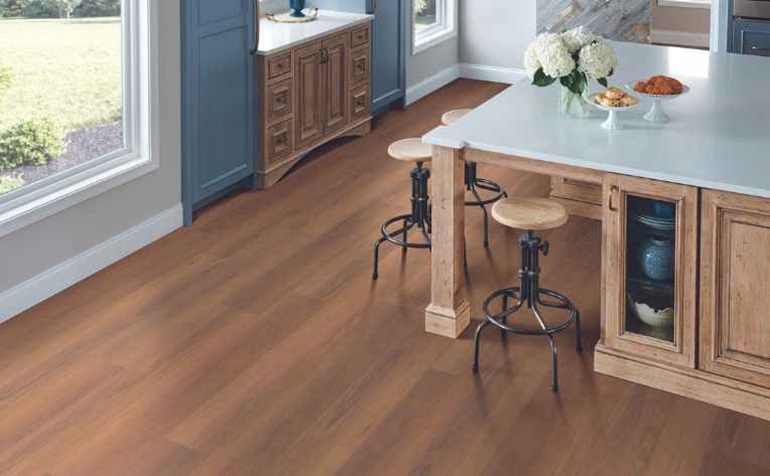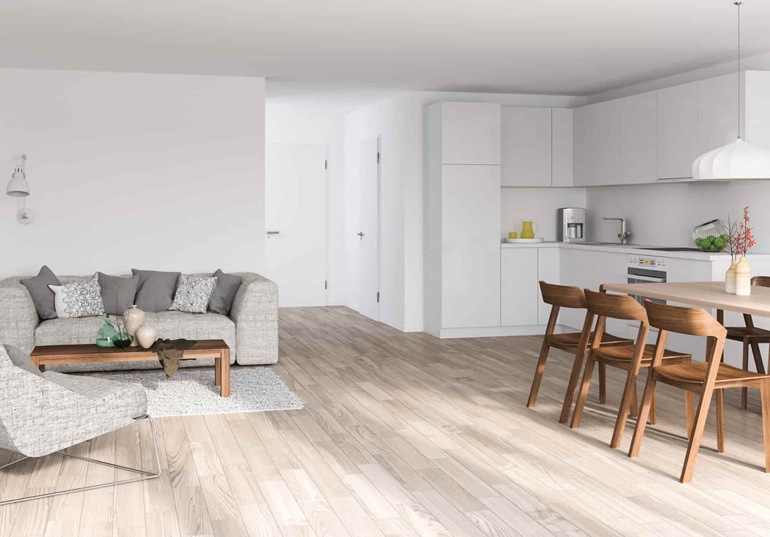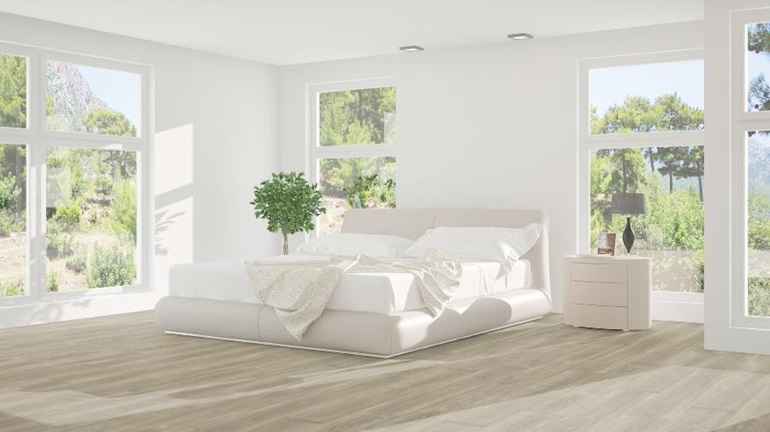Two of the most popular types of flooring to use throughout your home are hardwood and LVP (Luxury Vinyl Plank). Both are excellent products, but also very different from each other. The use of hardwood flooring traces back to the mid-1600s. It’s timeless and it works amazingly well with any interior.
However, wood is way more expensive than plank vinyl flooring and its maintenance also comes at a cost. For that reason, many homeowners opt for vinyl flooring as a cheaper alternative to hardwood flooring. But only because it’s cheaper, it does not mean that it’s lower quality. Quite the opposite. It’s high-quality, super durable, and much easier to install. You’ll be blessed with revamped flooring, without breaking the bank.
What Is Plank Vinyl Flooring?

People often confuse vinyl flooring with laminate. But they are two very different products. Vinyl flooring, as the name suggests, is made from vinyl, and is not a wood-based product.
Vinyl flooring is made from multi-layered synthetic materials such as fibreglass, plastic and PVC. It comes in the form of planks, vinyl tile planks or vinyl sheet. Vinyl plank flooring also goes by the name LVP and it comes in a wide range of designs and thicknesses which mimic hardwood flooring or ceramic tiles. The average thickness of vinyl planks is around 12 mil (mil is used to measure the thickness of vinyl planks, do not confuse it with millimetres) and it can range up to 20 mil. For commercial purposes, a thicker vinyl is preferred which is normally anything above 20 mil.
Can I Install Vinyl Flooring by Myself?
Vinyl flooring planks and tiles are super easy to install without the hassle that comes with hardwood flooring. Plank vinyl and tiles can be installed as a floating floor and thanks to the locking system, no glue is required. You just lock the pieces together, and you’re done. For some other types of vinyl, glue might be required to put pieces together.
Pros and Cons of This Type of Flooring

Vinyl flooring has taken the world by storm, and rightly so. It’s highly convenient to assemble, it’s durable and it is an affordable alternative to hardwood because it’s very easy to replace any damaged plank. But of course, just as with any other type of flooring, i has some downsides as well.
Pros:
- The most adaptable option among other flooring types
- Liquid spillage resistant
- Highly durable – it can last anywhere between 15 to 25 years without any wear and tear
- Stain-resistant and easy-to-clean
- Easy to install
- Highly affordable and cost-effective in the long run
- Versatility – a wide range of shapes, colours and designs that can simulate any other type of flooring and flooring patterns
- Low maintenance
Cons:
- Discolouration – low-quality vinyl flooring if exposed to direct sunlight can fade over time or become yellowing
- It has no home resale value unlike wood flooring, which can add to the selling price of the home
- And maybe the biggest downside to vinyl flooring is that it’s not eco-friendly
Other than that, vinyl flooring does not have so many downsides and it mostly comes down to a personal preference of which type of flooring you’re aiming for.
Is Vinyl Flooring Better Than Laminate?
Both products are popular alternatives to wood flooring. While both are designed to simulate wood-based floorings, vinyl offers a more realistic look. And while both options are highly durable, vinyl is more resistant to scratches and chipped corners, unlike laminate.
Additionally, if installed correctly, vinyl is 100% waterproof, and laminate can easily be damaged if it gets wet. Laminate is great for places with little to no moisture. Therefore, vinyl makes a better option for your home if you have small children or pets where spill accidents are more likely to happen.
When it comes to cost, laminate is a cheaper alternative to vinyl flooring, but is more difficult to maintain. And unlike vinyl, laminate tends to be hollow and therefore it’s not the best option for heavily trafficked areas. However, both are good options for residential flooring.
How to Clean and Maintain Vinyl Flooring Properly

One of the best things about plank vinyl is that is very easy to clean and low-maintenance. For maintenance, vacuum regularly and use a damp mop and a cleanser for vinyl flooring. However, avoid using excess water as it can cause damage to the flooring over time. For this reason, it would be best to stay away from using steam cleaners. The mop used for cleaning the floor should not be drenched in water. Leave it slightly damp, just enough to clean up the dirt and debris.
For removing stains, use only a cleaner that is specifically formulated for vinyl floors. Never use highly abrasive products as they can be damaging to the floor.
Can I Move Heavy Furniture on Vinyl Flooring Without Damaging It?
Although it’s completely fine to put heavy furniture on vinyl flooring, dragging them around is a different story. To avoid scuff marks and possible damage to the flooring, use protective layers such as carpet and bed sheets, or wooden boards and felt pads on the furniture legs.
Overall, vinyl is an extremely convenient alternative to other types of flooring. With its main features like water resistance, durability and affordability, no wonder it’s become all the rage over the last decade.

